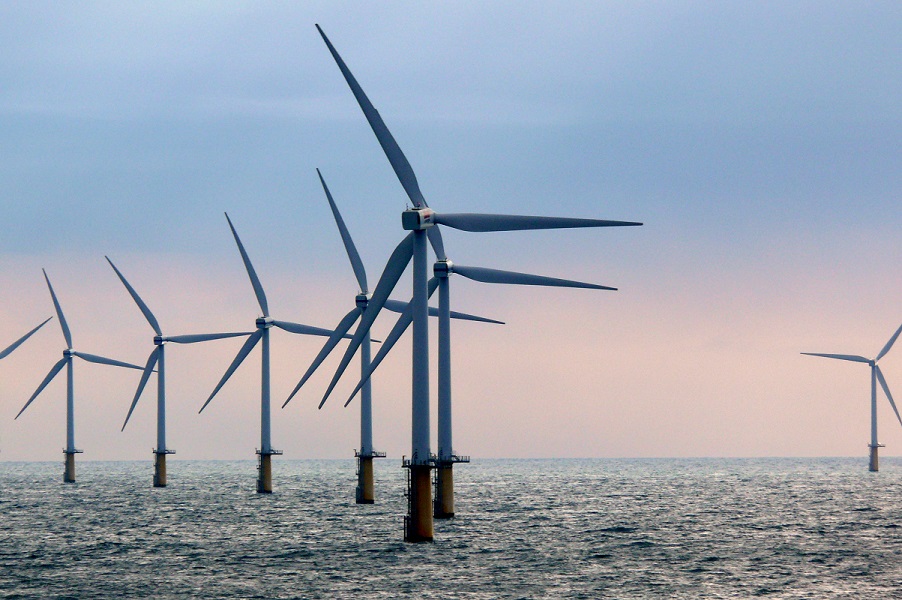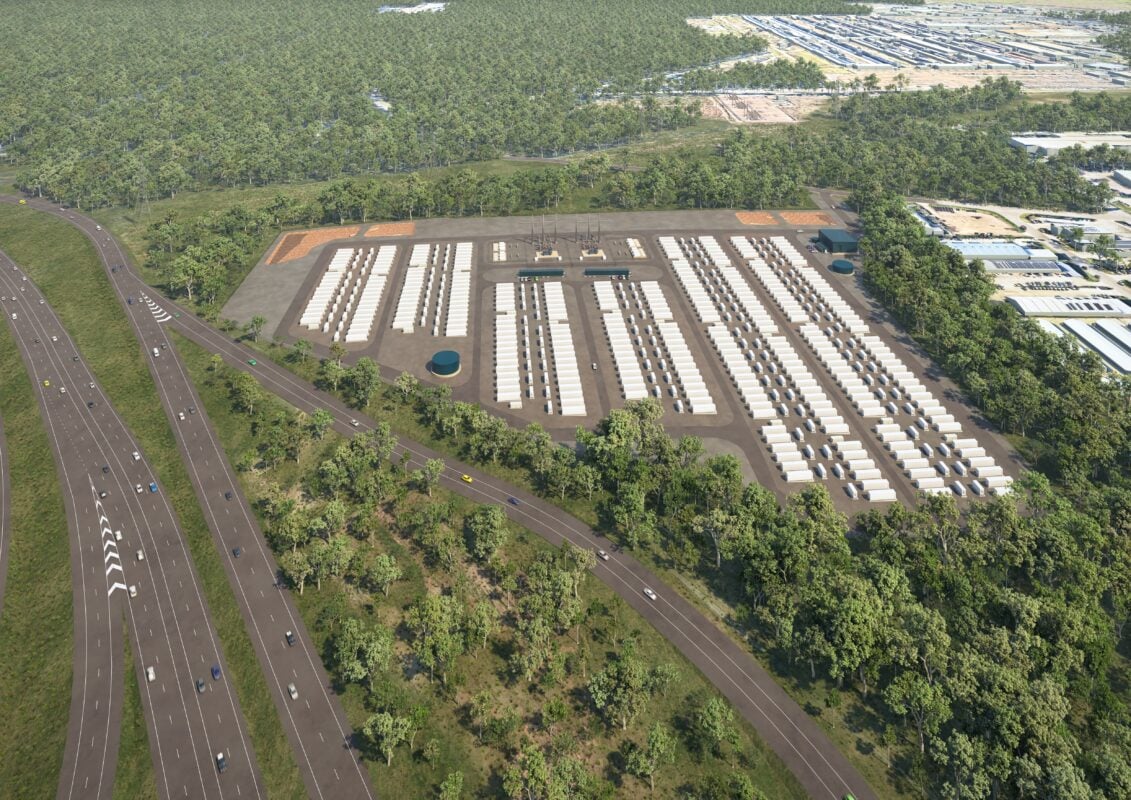Offshore wind is finding a new survival strategy – Semafor

Advancements in Offshore Wind Energy and Alignment with Sustainable Development Goals
The global transition towards sustainable energy sources is critical for meeting the targets outlined in the Sustainable Development Goals (SDGs). Offshore wind power represents a significant contributor to this transition, directly supporting SDG 7 (Affordable and Clean Energy) and SDG 13 (Climate Action). Despite its potential, the industry has faced considerable economic headwinds that threaten this progress. However, recent developments indicate that strategic financial and operational models are enabling the industry to overcome these challenges.
Industry Challenges in Achieving SDG 7 (Affordable and Clean Energy)
Economic and Logistical Hurdles
The expansion of offshore wind has been impeded by several factors that impact its financial viability and timely implementation, thereby slowing progress toward global energy and climate goals.
- High Costs and Extended Timelines: Offshore wind projects are inherently more expensive and have longer development cycles compared to onshore wind or solar installations.
- Inflationary Pressures: The period between securing a power purchase agreement and the commencement of energy sales exposes projects to significant inflation risk. Rising construction costs during this interval can erode or eliminate profitability.
- Market Contraction: These financial pressures led to a market downturn beginning in 2023, characterized by a series of project cancellations, declining share prices for developers, and industry-wide layoffs.
Strategic Financial Models Fostering Progress on SDG 9 and SDG 17
Case Study: Ørsted and Iberdrola Projects
Recent projects by industry leaders Ørsted and Iberdrola have successfully cleared major financial hurdles, providing a blueprint for sustainable development in the sector. These successes are underpinned by innovative strategies that align with SDG 9 (Industry, Innovation and Infrastructure) and SDG 17 (Partnerships for the Goals).
Key Factors for Success and Partnership Models (SDG 17)
According to analysis from Wood Mackenzie, two primary factors contributed to the viability of these new projects:
- Expansion of Existing Infrastructure (SDG 9): Both initiatives involve the expansion of nearby, already operational wind farms. This approach mitigates risk and reduces costs associated with preliminary engineering and design that are typical for entirely new projects.
- Specialized Long-Term Contracts (SDG 17): The projects are secured by specialized power sales contracts that insulate them from inflation and market volatility through robust partnerships.
- Ørsted-TSMC Partnership: A portion of the power from Ørsted’s project is sold to chip manufacturer TSMC under a deal backed by a government-set feed-in tariff. This public-private partnership model guarantees a secure, long-term revenue source.
- Iberdrola-UK Government Partnership: Iberdrola’s project is supported by a “contract for difference” with the UK government. This mechanism ensures financial stability by having the government cover the difference if market power prices fall below a pre-agreed level.
Ensuring Financial Viability for Sustainable Economic Growth (SDG 8)
The Capital-Recycling Flywheel
The success of these financial models is crucial for maintaining momentum in the renewable energy sector. This “capital-recycling flywheel,” where profits and capital from operational projects are reinvested into new developments, is essential for scaling up the infrastructure required to meet the SDGs. Ørsted’s strategy to sell its equity stake in the project upon completion exemplifies this, as it will free up capital for subsequent investments.
Economic Outcomes and Future Outlook
The positive outcomes from these projects highlight a path forward for the industry that supports multiple Sustainable Development Goals.
- Economic Feasibility: These deals demonstrate that offshore wind can be made economical through innovative partnerships, reducing reliance on direct tax subsidies and creating a more sustainable market.
- Profitability and Investment: After a period of cost-cutting, both Ørsted and Iberdrola reported substantial profit increases in the first half of this year, largely driven by newly operational offshore wind projects.
- Contribution to Broader Goals: This renewed profitability is vital for attracting the sustained investment needed to foster decent work and economic growth (SDG 8), build resilient infrastructure (SDG 9), and ultimately advance global climate action (SDG 13).
1. Which SDGs are addressed or connected to the issues highlighted in the article?
The article on the offshore wind industry’s challenges and recent successes connects to several Sustainable Development Goals (SDGs). The core themes of renewable energy generation, economic viability, infrastructure development, and climate action are central to the following SDGs:
- SDG 7: Affordable and Clean Energy: This is the most direct SDG, as the article’s entire focus is on the generation of clean electricity from offshore wind farms and the economic mechanisms needed to make it affordable and profitable.
- SDG 9: Industry, Innovation, and Infrastructure: The article discusses the construction of large-scale, sustainable energy infrastructure (wind farms) and the innovative financial models required to overcome industry challenges.
- SDG 13: Climate Action: The development of offshore wind is a fundamental strategy to combat climate change by increasing the share of renewable energy and reducing reliance on fossil fuels.
- SDG 8: Decent Work and Economic Growth: The article touches upon the economic health of the wind industry, mentioning profitability, share prices, and layoffs, linking the transition to green energy with economic outcomes.
- SDG 17: Partnerships for the Goals: The success of the projects mentioned hinges on partnerships between private companies (Ørsted, Iberdrola, TSMC) and governments (UK government), highlighting the collaborative effort needed to achieve large-scale sustainable development.
2. What specific targets under those SDGs can be identified based on the article’s content?
Based on the article’s discussion of offshore wind projects, their financing, and their purpose, several specific SDG targets can be identified:
SDG 7: Affordable and Clean Energy
- Target 7.2: “By 2030, increase substantially the share of renewable energy in the global energy mix.” The article directly addresses this by describing new, large-scale offshore wind projects by Ørsted and Iberdrola that “pack a major power punch,” contributing significantly to the energy supply.
- Target 7.a: “By 2030, enhance international cooperation to facilitate access to clean energy research and technology… and promote investment in energy infrastructure and clean energy technology.” The article provides examples of major international companies (Ørsted from Denmark, Iberdrola from Spain) investing in and developing massive clean energy infrastructure projects.
SDG 9: Industry, Innovation, and Infrastructure
- Target 9.1: “Develop quality, reliable, sustainable and resilient infrastructure… to support economic development and human well-being.” Offshore wind farms are a prime example of the sustainable and reliable infrastructure being developed to meet the “growing demands on global electric grids.”
- Target 9.4: “By 2030, upgrade infrastructure and retrofit industries to make them sustainable… with greater adoption of clean and environmentally sound technologies.” The entire article is about the energy industry’s shift towards clean technology (wind power) to make the energy grid more sustainable.
SDG 13: Climate Action
- Target 13.2: “Integrate climate change measures into national policies, strategies and planning.” The article mentions government-backed mechanisms like a “feed-in tariff” and a “contract for difference with the UK government.” These are national policy instruments designed to promote renewable energy and thus integrate climate action into economic planning.
SDG 17: Partnerships for the Goals
- Target 17.17: “Encourage and promote effective public, public-private and civil society partnerships…” The article highlights two key examples of such partnerships: Ørsted’s deal involving the chip manufacturer TSMC and a government-set tariff, and Iberdrola’s deal backed by a “contract for difference” with the UK government. These show public-private collaboration is “crucial in keeping the capital-recycling flywheel turning.”
3. Are there any indicators mentioned or implied in the article that can be used to measure progress towards the identified targets?
The article implies several quantitative and qualitative indicators that can be used to measure progress towards the identified targets:
SDG 7: Affordable and Clean Energy
- Implied Indicator (for Target 7.2): Increase in installed renewable energy generating capacity. The article discusses the development of new offshore wind projects by Ørsted and Iberdrola, which directly adds to the total capacity of renewable energy.
- Implied Indicator (for Target 7.2): Amount of power generated from renewable sources. The projects are described as packing a “major power punch” and selling their “first electrons,” which is a direct measure of clean energy production.
SDG 8: Decent Work and Economic Growth
- Implied Indicator (for Target 8.2): Profitability of the renewable energy sector. The article explicitly states that “both Ørsted and Iberdrola saw a substantial increase in profit in the first half of this year,” serving as a direct indicator of the economic viability and growth of the sector.
- Implied Indicator (for Target 8.5): Employment trends in the green economy. The article mentions a negative indicator from 2023, the “rash of… layoffs,” which can be contrasted with job creation from new, successful projects.
SDG 9: Industry, Innovation, and Infrastructure
- Implied Indicator (for Target 9.1): Investment in sustainable infrastructure. The article focuses heavily on the financing of these multi-billion dollar projects and the “capital-recycling flywheel,” indicating that the flow of capital into such infrastructure is a key metric of progress.
SDG 17: Partnerships for the Goals
- Implied Indicator (for Target 17.17): Number and value of public-private partnership agreements for sustainable infrastructure. The article details specific agreements, such as Iberdrola’s “contract for difference” with the UK government and Ørsted’s power sales deal with TSMC, which serve as concrete examples of this indicator.
4. Create a table with three columns titled ‘SDGs, Targets and Indicators” to present the findings from analyzing the article. In this table, list the Sustainable Development Goals (SDGs), their corresponding targets, and the specific indicators identified in the article.
| SDGs | Targets | Indicators (Mentioned or Implied in the Article) |
|---|---|---|
| SDG 7: Affordable and Clean Energy | 7.2: Increase substantially the share of renewable energy in the global energy mix. |
|
| SDG 9: Industry, Innovation, and Infrastructure | 9.1: Develop quality, reliable, sustainable and resilient infrastructure.
9.4: Upgrade infrastructure and retrofit industries to make them sustainable. |
|
| SDG 13: Climate Action | 13.2: Integrate climate change measures into national policies, strategies and planning. |
|
| SDG 8: Decent Work and Economic Growth | 8.2: Achieve higher levels of economic productivity through diversification, technological upgrading and innovation. |
|
| SDG 17: Partnerships for the Goals | 17.17: Encourage and promote effective public, public-private and civil society partnerships. |
|
Source: semafor.com

What is Your Reaction?
 Like
0
Like
0
 Dislike
0
Dislike
0
 Love
0
Love
0
 Funny
0
Funny
0
 Angry
0
Angry
0
 Sad
0
Sad
0
 Wow
0
Wow
0









































































